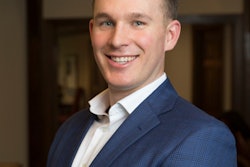
It is increasingly difficult for young dentists to achieve desirable career, lifestyle, and financial outcomes, according to a study published recently in the Journal of the American Dental Association. The reason? High student debt.
"The new reality of high educational debt requires graduates to budget and plan before beginning their careers," wrote authors Dr. Bruce Haskell, PhD, from the University of Kentucky College of Dentistry and Thomas Keefe, PhD, from Indiana University Southeast (JADA, February 3, 2022).
Haskell and Keefe modeled five student loan repayment and career choice combinations for a fictitious dental student who graduated from dental school in 2019.
| Student loan repayment and career choice combinations | |||||
| Scenario 1 | Scenario 2 | Scenario 3 | Scenario 4 | Scenario 5 | |
| Employment type | DSO | DSO | DSO | Traveling dentist | DSO |
| Starting income | $120,000 | $120,000 | $120,000 | $250,000 | $120,000 |
| Loan repayment plan | Federal (6%, 10-year) | Laurel Road (2.8%, 10-year) | Pay As You Earn (variable, 20-year) | Pay As You Earn, years 1-4 (variable, 20-year); Laurel Road, years 5-14 (2.8%, 20-year) | |
| Practice purchase | No | No | No | Yes, year 4 | Yes, year 4 |
In all scenarios, the fictitious dentist starts with $292,169 in student loan debt, the average loan debt of dental graduates in 2019. In most scenarios, the dentist works for 40 years in Louisville, KY, and earns a starting salary of $120,000. Taxes are based on 2020 rates, and estimated monthly expenditures were taken from the U.S. Bureau of Labor Statistics.
The starting debt rate made it difficult for the graduate to achieve desirable financial outcomes, according to the authors. While practice ownership and a comfortable lifestyle were still possible in some scenarios, it was nearly impossible in others.
In the first scenario, the graduate's monthly student loan payment of $3,342, payment for a $35,000 car, and $1,2000 monthly rent would put them into consumer debt right after school.
"Loan repayments are so large that they cause monthly budgetary imbalances leading to consumer debt just to fund ordinary purchases," the authors wrote. "Not until year 11 is the graduate estimated to achieve a balanced budget and pay down consumer debt."
The graduate doesn't fare much better in the second scenario. In this scenario, the graduate has a $2,879 monthly student loan payment, a $15,000 car, and spends $1,000 per month in rent. Still, the dentist can't contribute to a 401(k) until year 3 and can't purchase a $402,000 home until year 11.
"Scenario 2 indicates the value of budgeting, frugality, and financial planning," the authors wrote. "Even with a low-interest loan, if spending increases by only a few hundred dollars a month, consumer debt could easily spiral out of control."
In the third scenario, the graduate pays the highest total student loan cost of all five scenarios: $480,094. While the scenario frees up cash flow early on in the dentist's career, it might not cover interest and can result in a substantial loan forgiveness tax, the authors noted.
The last two scenarios were the only ones to consider the difficulty and benefits of practice ownership.
In the fourth scenario, the dentist accepts the highest paying position in Brownsville, TX; purchases a $41,000 car; and rents an apartment for $2,500 per month. The graduate can save more than $100,000 within three years and buy a practice in year 4.
"By 2060, this dentist is estimated to have lifetime earnings of $28,326,517, approximately $15,000,000 more than those in scenarios 1 through 3, with inflation included in the calculations," the authors wrote.
In the fifth and final scenario, the dentist once again starts with a salary of $120,000. Like in the second scenario, the graduate is frugal and spends $1,000 per month on rent and owns a $20,000 car. But this time, the dentist opts for the lower interest loan repayment plan at first, spending only $259 per month for the payment in the first year. This allows the dentist to save nearly $70,000 in three years and purchase a practice for $500,000 in year 4.
"At retirement, this dentist has an estimated lifetime earnings of $21,0492,099, approximately $8,000,000 more than those in scenarios 1 through 3," the authors wrote.
The scenarios illustrate that it is difficult but possible to achieve desired lifestyle and financial outcomes. The choice of repayment plans and careers can make a difference of more than $5 million in lifetime earnings and more than $3 million in retirement savings.
"It is not enough to be a highly competent practitioner," the authors wrote. "The new reality of high-cost dental education requires financial savvy."
Current and future dental school students who want the best chance of success can consider attending a school with lower costs, avoid using loan money for discretionary spending, and choose a repayment plan that matches their lifestyle and career goals, the authors noted. They also advised consulting with brokers, attorneys, financial advisors, and certified public accountants before making major decisions.
"Choosing appropriate repayment plans, monitoring income gains during income-driven repayments, and finally obtaining loans at the lowest interest rates is challenging and laborious," they wrote. "Our leadership must be both aware and responsible to our profession's continued well-being by means of addressing the roots of excessive school indebtedness."



















